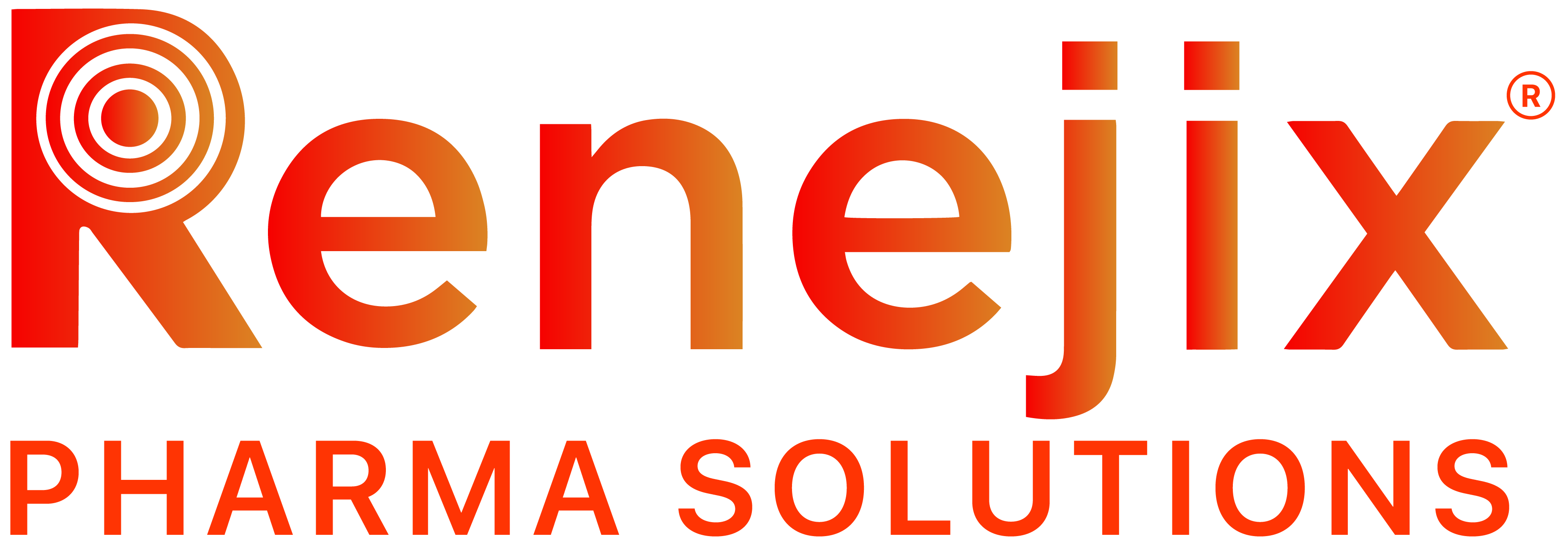
Addressing the Unique Challenge of Pediatric Medication Dosage Delivery in the Pharmaceutical Industry.
Establishing suitable dosage regimens for pediatric patients is an unparalleled obstacle encountered by the pharmaceutical industry. It is a fallacy to believe that scaling down adult doses based on body weight will suffice. However, this approach often proves ineffective, as children’s distinctive physiology and development render them incapable of being treated as mere replicas of adults. Moreover, the extensive range of age groups within the pediatric population exacerbates the intricacies of creating a singular, appropriate dosage form that caters to all young patients.
Older children and adolescents may easily swallow pills or capsules, whereas younger children may not possess the capacity or inclination to do so. Consequently, a solitary product may require an assortment of different dosage forms, excipients, and dose sizes to accommodate everyone. However, since the pediatric population is smaller than the adult population, developing and adjusting formulations for varying pediatric groups may not be financially feasible for brand owners, particularly for illnesses that are not widespread.
The pharmaceutical industry faces the important task of harmonizing commercial realities and constraints with the risks involved in conducting clinical trials, particularly in the context of pediatric patients. Regulatory frameworks are implemented.
PHARMACEUTICAL MANUFACTURING & ACCELERATING SUPPLY
Successful product launches and reliable commercial supply are built on cutting-edge manufacturing science, seamless tech transfers, and the art of customized solutions at the right scale.
Renejix’’s track record in supporting tech transfers and product coupled with industry leading manufacturing technologies, customizable suites and flexible end-to-end solutions at the right scale, will help get your products, orphan or blockbuster, to market faster, turning your science into commercial success. Establishing suitable dosage regimens for pediatric patients is an unparalleled obstacle encountered by the pharmaceutical industry. It is a fallacy to believe that scaling down adult doses based on body weight will suffice. However, this approach often proves ineffective, as children’s distinctive physiology and development render them incapable of being treated as mere replicas of adults. Moreover, the extensive range of age groups within the pediatric population exacerbates the intricacies of creating a singular, appropriate dosage form that caters to all young patients.
Older children and adolescents may easily swallow pills or capsules, whereas younger children may not possess the capacity or inclination to do so. Consequently, a solitary product may require an assortment of different dosage forms, excipients, and dose sizes to accommodate everyone. However, since the pediatric population is smaller than the adult population, developing and adjusting formulations for varying pediatric groups may not be financially feasible for brand owners, particularly for illnesses that are not widespread.
The pharmaceutical industry faces the important task of harmonizing commercial realities and constraints with the risks involved in conducting clinical trials, particularly in the context of pediatric patients. Regulatory frameworks are implemented to guide discerning business decisions concerning pediatric clinical trials. Additionally, pharmaceutical companies may be incentivized to engage in the development of pediatric drugs through various supplementary measures.
Regulatory Obstacles
Regulatory challenges present significant hurdles for businesses across various industries. In the financial services sector, these obstacles manifest in different forms, such as complex regulations, inconsistent enforcement practices, and a lack of clarity. These challenges not only impede operational efficiency and effectiveness but also contribute to increased business costs.
The biggest challenge facing those developing pediatric oral solid formulations is the creation of easy-to-administer dosage forms where the dose is sufficiently flexible to allow titration for different children’s needs.
One prevalent regulatory obstacle is the complexity of regulations within the financial services industry. Given the heavy regulation, understanding and complying with the rules can be arduous and confusing. The intricacy involved can lead to compliance errors, potentially resulting in fines and penalties.
Inconsistent enforcement represents another common regulatory obstacle. Different regulatory authorities often interpret the same regulations differently, leading to varying treatment of businesses depending on the regulatory body involved. This inconsistency creates uncertainty, making it challenging for businesses to determine what is expected of them and introducing additional risks.
Furthermore, a lack of clarity poses a regulatory obstacle as well. The financial services industry undergoes frequent changes, with new regulations continually introduced. Staying up-to-date with these changes can be difficult for businesses, causing uncertainty about compliance requirements.
Regulatory obstacles significantly impact businesses by hindering operational efficiency and increasing costs. However, businesses can mitigate these challenges by collaborating with regulators to gain a comprehensive understanding of regulations, implementing robust compliance programs, and remaining informed about the latest regulatory developments.
Pharmaceutical companies face significant challenges in creating safe and effective drug formulations for pediatric patients. Regulatory authorities play a crucial role in ensuring that drugs developed for this population have an acceptable risk-benefit profile and meet the specific needs of different age groups.
To achieve this, both the European Union and the United States have implemented strict regulations that require pharmaceutical companies to submit comprehensive pediatric investigation plans for new drug registrations. The European Medicines Agency (EMA) mandates that all new drugs registered in the EU must have an approved pediatric investigation plan, while the US FDA has made the Best Pharmaceuticals for Children Act (BPCA) and the Pediatric Research Equity Act (PREA) permanent laws.
(To ensure successful product launches and dependable commercial supply, advanced manufacturing science, effortless tech transfers, and personalized solutions at the appropriate scale are essential.
Renejix has a proven track record of supporting numerous tech transfers and product launches each year. With top-of-the-line manufacturing technologies, adaptable suites, and flexible end-to-end solutions at the appropriate scale, Renejix can help you bring your products, whether they are orphan or blockbuster, to market faster, and turn your scientific research into commercial success.)
The EMA’s 2014 Guideline on Pharmaceutical Development of Medicines for Pediatric Use provides detailed guidance on dosage form, route of administration, dosing frequency, modified release, excipient safety, and formulation adaptation for pediatric patients. The addendum to the International Conference on Harmonisation’s (ICH’s) guideline E11 on Clinical Investigation of Medicinal Products in the Pediatric Population, which took effect in February 2018, further clarifies regulatory requirements for pediatric study plans and how pediatric clinical trials should be conducted.
When developing pediatric formulations, companies should consider age-appropriate dosage forms, ease of preparation and use for caregivers, acceptability, and the choice and number of excipients. Alternative delivery systems and appropriate packaging are also recommended. By following these guidelines and working closely with regulatory authorities, pharmaceutical companies can develop safe and effective drugs that meet the unique needs of pediatric patients.
During the transition from infancy to adulthood, individuals undergo significant physiological, metabolic, and physical changes that impact the pharmacokinetics (PK) and pharmacodynamics (PD) of drugs, leading to variations in in vivo behavior between children and adults. As a result, meeting the bioavailability and safety requirements for pediatric patients may necessitate the utilization of alternative drug delivery technologies and different excipients.
For instance, the first few weeks of life witness substantial shifts in gastric pH, which continue to evolve as infants transition from a milk-based diet to solid foods. Changes in factors such as intestinal fluid volume, composition, transit time, and the secretion of bile and pancreatic fluids also directly influence drug exposure. Therefore, when designing formulations, it is important to consider the typically slower permeation rate through the gastrointestinal tract’s epithelial layer in children, while recognizing that the behavior of individual active pharmaceutical ingredients (APIs) may vary.
Clearance-related considerations include variations in plasma protein binding, metabolic enzymes, and total body water as individuals grow and mature. Additionally, differences in the first-pass effect, glomerular filtration, as well as renal secretion and absorption contribute to the distinctive in vivo behavior observed between children and adults.
Addressing Limitations of Existing Dosage Forms: Innovative Solutions
Developing pediatric oral solid formulations that are easy to administer with sufficiently flexible dosing to meet different children’s needs is the primary challenge. Reducing the frequency of dosing and incorporating taste-masking technology, when deemed necessary, to enhance palatability and acceptance is also of paramount importance.
Administering the correct dose is a challenge, and dosing devices that allow measurement of different amounts/volumes of the medication can help address this issue. Age-appropriate administration devices such as solid dosage pens, multi-particulate counters, and medicated straws can improve pharmaceutical products’ acceptability.
Determining an appropriate excipient that guarantees the absence of adverse events poses a challenge due to the fact that excipients considered safe for adult use may not be suitable for children, considering their specific age and developmental stage. To address this, the Safety and Toxicity of Excipients for Pediatrics (STEP) database serves as a valuable tool for assessing the safety of excipients and determining the need for additional studies.
The impact of food on drug absorption is an essential factor to consider since the presence of food in the gastrointestinal tract can influence the absorption of medications. It is important to carefully consider the impact of food on drug absorption and bioavailability when designing pediatric formulations.
The lack of dosage form options for specific populations, such as infants and young children who may require liquid formulations due to their inability to swallow solid dosage forms, is another limitation. This limitation can be addressed by developing specialized drug delivery systems appropriate for these populations, such as sprays, sublingual tablets, or orally disintegrating tablets.
Finally, quality control measures should be implemented throughout the manufacturing process to ensure consistent quality and dosage accuracy, given that pediatric formulations are often manufactured in smaller batches than adult formulations, which can increase the risk of variability between batches.
Enhancing the Palatability of Dosage Forms for Pediatric Use
To enhance the palatability of dosage forms for pediatric use, several topics can be explored. Here are some areas to consider:
1.Taste-masking technologies: Research on taste-masking technologies can provide insights into effective methods of masking unpleasant tastes in pediatric medications. This may involve the use of sweeteners, flavors, or encapsulation techniques such as ion exchange resin and cyclodextrin complexation. These technologies help create a more pleasant taste experience for children and improve medication acceptance.
2.Pediatric formulation development: Developing age-appropriate formulations is crucial for improving medication palatability. Studies focusing on formulating dosage forms specifically designed for pediatric patients, such as mini-tablets or multiparticulates, can provide valuable information on optimizing taste-masking strategies and administration ease.
3.Patient acceptability assessments: Conducting patient acceptability assessments is vital in evaluating the palatability of pediatric medications.
Research that highlights methodologies for assessing palatability and measuring children’s preferences and perceptions can guide pharmaceutical companies in formulating medications that are more appealing to young patients.
4.Factors influencing palatability: Understanding the factors that influence the palatability of medications for children is essential. This includes examining the impact of taste, texture, aroma, and appearance on medication acceptability. Research investigating the preferences of different age groups and cultural considerations can offer valuable insights into developing more enjoyable dosage forms.
5.Regulatory guidelines and recommendations: Exploring regulatory guidelines and recommendations from organizations such as the European Medicines Agency (EMA) or the US
To ensure compliance and maximize adherence, it is crucial to prioritize the enjoyment and appeal of pediatric medication, thereby preventing children from being discouraged by unpleasant or bitter tastes. If a medication has an unpalatable taste, a child may try it once and refuse to take it again. Various methods have been explored to mask the taste, including the use of sweeteners, flavors, ion exchange resin and cyclodextrin complexation, polymer film-coating, hot-melt coating, spray congealing, melt extrusion, or melt granulation.
While solid dosage forms are generally preferred due to their long-term stability, simple supply chain, and low manufacturing expenses, the ideal dosage form may vary depending on the child’s age. The European Medicines Agency (EMA) recommends evaluating patient acceptability for all pediatric product development initiatives. Clinical trials have demonstrated the increasing popularity of oral solid dosage forms, such as mini-tablets designed for young children. Multiparticulates or granules incorporating taste-masking technologies can enhance adherence among infants and young children who are unable to swallow tablets.
According to the EMA’s guidance on patient acceptability, the following factors should be considered:
1.Palatability: The medication should be palatable to the specific patient population, potentially involving the masking of bitter or unpleasant tastes.
2.Appearance: The medication should have an appealing appearance tailored to the target patient population. This may involve incorporating colors, flavors, or shapes that are attractive to children.
3.Ease of administration: The medication should be easy for the target patient population to administer. This may entail utilizing a simple dosage form, such as a liquid suspension or chewable tablet.
By taking these factors into account, pharmaceutical companies can develop pediatric medications that are more likely to be accepted and taken by children.
Dealing with the Complexity of Diverse Dosage Sizes
Even after selecting an appropriate dosage form, accurately measuring a dose of medication to meet the needs of patients of various sizes is crucial, particularly when it comes to pediatric medications. Formulation scientists play a pivotal role in creating pediatric medication that caregivers can administer precisely, effectively addressing the challenge of variable dosage sizes. Here are some specific approaches formulation scientists can employ to achieve this goal:
1.Development of Age-Appropriate Strengths: Formulation scientists can focus on developing pediatric medications in multiple strengths that are specifically tailored to different age groups or weight ranges. This allows for more accurate dosing based on the specific requirements of each patient. For instance, liquid formulations may be available in different concentrations to accommodate various dosage needs.
2.Volume. This enables accurate dosing of smaller volumes for infants or young children who require lower doses. Additionally, unit-dose formulations, such as individually packaged tablets or oral powders, ensure precise dosing by providing pre-measured doses ready for administration.
3.Development of Dosing Devices: Formulation scientists can collaborate with medical device engineers to design and develop dosing devices that assist caregivers in accurately measuring and administering the appropriate dose. These devices, such as calibrated oral syringes, droppers, or measuring cups, facilitate accurate dosing based on the prescribed quantity.
4.Clear and Accurate Labeling: It is crucial for formulation scientists to work closely with regulatory experts to ensure clear and accurate labeling of pediatric medication. Labels should provide explicit instructions on dosing based on weight or age, along with appropriate units of measurement. Clear and user-friendly instructions can help caregivers administer the correct dosage, minimizing the risk of underdosing or overdosing.
5.Collaboration with Healthcare Professionals: Collaboration between formulation scientists and healthcare professionals, including pediatricians and pharmacists, is essential. This collaboration ensures that medication dosing guidelines are developed specifically for different age groups, aligning formulation strategies with the clinical needs and best practices in pediatric care.
By implementing these strategies, formulation scientists can create pediatric medication that effectively meets the challenge of variable dosage sizes. Precise dosing, age-appropriate strengths, specialized dosing devices, accurate labeling, and collaboration with healthcare professionals all contribute to ensuring that caregivers can administer medication with precision, ultimately enhancing patient safety and therapeutic efficacy.
Traditional syrups and other liquid formulations can be adjusted by modifying the prescribed volume to align with the specific needs of patients. Likewise, reconstitutable powders offer inherent flexibility, allowing for dose customization during preparation.
Conventional formulations in various dosage strengths can be created for solid oral dosage forms. Alternatively, a counting device filled with mini-tablets can be used to dispense the appropriate number of tablets to match the prescribed dose. There is no one technology that can address every challenge in pediatric drug development. However, certain dosage forms, such as pellets, mini-tablets, minisoftgels, chewable products, and orally dissolving tablets, are more adaptable and therefore more likely to be accepted by children.
Conclusion
In conclusion, the pharmaceutical industry places a strong emphasis on developing safe, effective, and age-appropriate medicines for pediatric patients. Collaboration between industry, academia, and clinical pharmacy is paramount in addressing the unique challenges associated with pediatric drug formulation and delivery.
Initiatives such as the European Paediatric Formulation Initiative play a crucial role in raising awareness and proposing well-thought-out strategies for the development of pediatric formulations. Through collaboration and resource pooling, innovators strive to overcome the significant obstacles related to pediatric drug delivery and formulation.
Reference:
Ayadi, R., Boumediene, M., & Tarazi, A. (2016). Regulatory obstacles to financial inclusion. Journal of Financial Regulation and Compliance, 24(3), 318-337. doi:10.1108/JFRC-01-2016-0004)
Taste Masking Technologies in Oral Pharmaceuticals: Recent Developments and Approaches.” Pharmaceutical Development and Technology, vol. 23, no. 4, 2018, pp. 492–510., doi:10.1080/10837450.2017.1352733







